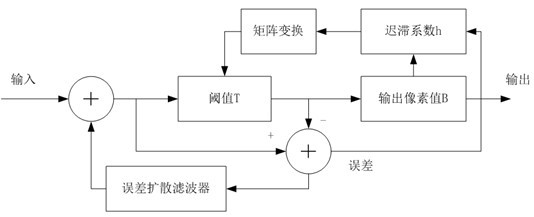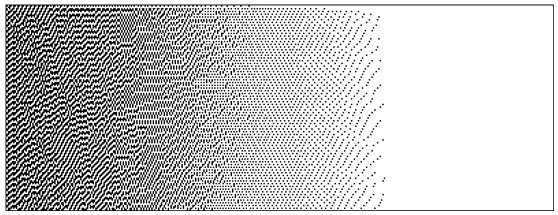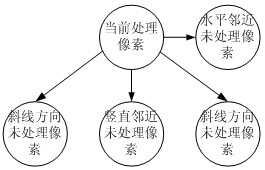Image-tone-based adaptive green-noise screening method
An adaptive, green noise technology, applied in image communication, electrical components and other directions, can solve the problems of uneven vision, roughness, and loss of image details in the green noise screening algorithm, and achieve the effect of solving uneven vision.
- Summary
- Abstract
- Description
- Claims
- Application Information
AI Technical Summary
Problems solved by technology
Method used
Image
Examples
Embodiment
[0050] A kind of adaptive green noise screening method based on image tone, comprises the following steps:
[0051] Step 1. Compare the pixel g(m,n) of the original image with the threshold T. The threshold T is initially defined as 0.5, and the post-threshold T=T+d; the processed result is converted into the pixel value b( m,n); The scanning direction when reading the pixel g(m,n) to be processed is selected according to the parity of m: when m is an odd number, the scanning direction is from right to left; when m is an even number, the scanning direction from left to right;
[0052] Step 2, compare b(m,n) with g(m,n) to obtain the error value e(m,n); error value e(m,n)=g(m,n)-b(m ,n);
[0053] Step 3, diffuse e(m,n) to the unprocessed pixels around the current processed pixel through the error diffusion filter, that is, the diffused pixel value is equal to the sum of the original image pixel value and the diffused error; green noise screening algorithm Due to the generati...
PUM
 Login to View More
Login to View More Abstract
Description
Claims
Application Information
 Login to View More
Login to View More - R&D
- Intellectual Property
- Life Sciences
- Materials
- Tech Scout
- Unparalleled Data Quality
- Higher Quality Content
- 60% Fewer Hallucinations
Browse by: Latest US Patents, China's latest patents, Technical Efficacy Thesaurus, Application Domain, Technology Topic, Popular Technical Reports.
© 2025 PatSnap. All rights reserved.Legal|Privacy policy|Modern Slavery Act Transparency Statement|Sitemap|About US| Contact US: help@patsnap.com



